Wolfgang Matuschek thought about calling his exhibition “Buildings”, but then didn’t. The idea occurred to him because as a former architecture student, he likes examining the definition of what a building is. What intrinsically defines it. From what point it is considered as being such a thing, in other words a finished architectural product. When taking a closer look, there are elements and details that seem to be deployed infinitely in Matuschek’s drawings: strange, shifting roofs play a major role in the structure of his compositions. In the same way that they very define the form of a building, by punctuating it.
An entanglement of levels complexifies even more the way we can seize the images created by Matuschek. To the multitude of confused details, there might be added a sense of the infinite provided by the rigour of a line inherited from the techniques of architectural drawing. This meticulousness displays an extreme sensitivity, as with Hercules Seghers, master engraver and influence of Rembrandt. He used his technical virtuosity in the production of a landscape imagery which never depicted anything tangible but rather a mental image, as in a memory or a dream.
In Matuschek’s landscapes, time seems to have been flattened out, urgency has vanished, their utter calmness is disturbing. The sky grows dark in the background of the images and the blast of the wind can be felt: the hanging lamps bend slightly and the composition flickers. A well-informed observer might see here a kind of surrealism tending towards a form of super-naturalism°. What then comes to mind is a late, or neo-post naturalism which seems to have bestraddled the 20th century, and probably the 21st too, to be reborn from the still-warm ashes of humanity’s disappearance. For this exhibition devoid of a title, but which the artist would have liked to call “Buildings”, even the birds, frequent witnesses to his previous drawings’ sweetly apocalyptic scenes, have vanished. Life has clearly given way to depiction. Animals are no longer players in the landscape but vectors of Matuschek’s complexification of plays on mise en abyme. An image in an image, one of his main interests, becomes the central subject of this tondo series. Only a few vaguely anthropomorphic cardboard boxes, left here and there on the shelves of derelict factories, are reminders that mankind was at the origin of this vanished world.
But, at the origin, there is also a cartoonish dog which Matuschek has sketched, inspired by his fascination for the creation process of fictional characters. The pencil drawings called Character notes bring to mind mental moodboards made up of screenshots. Printed, randomly thrown away, he then conceives contexts around them: occasional tables, coffee cups or smoking ashtrays constitute the scenery of this brainstorming in which a few famous characters can be recognised: Bunsen and Beaker, or Wile E. Cojote, among others. In this galaxy of fictional icons, Mysterious Pete and his dog, the Hound of Bunkerville, dominate. Exfiltrated from Lyonel Feininger’s comics, The Kin-der-Kids (1906), these disturbing messengers, transported by a cloud, now appear on billboards and no longer seem to have the narrative influence which their American master gave them. The plot also seems to have been lost and replaced by posters and advertising in which Matuschek’s characters lie. Dazing? Or else it’s all a deception and we are being thrown off by the repetition of these images’ mises en abyme while the artist is quite mysteriously concealing the story which is taking place in front of us.
°As with Ernst Yohji Jaeger
Wolfgang Matuschek
7 rue de Beaune, Paris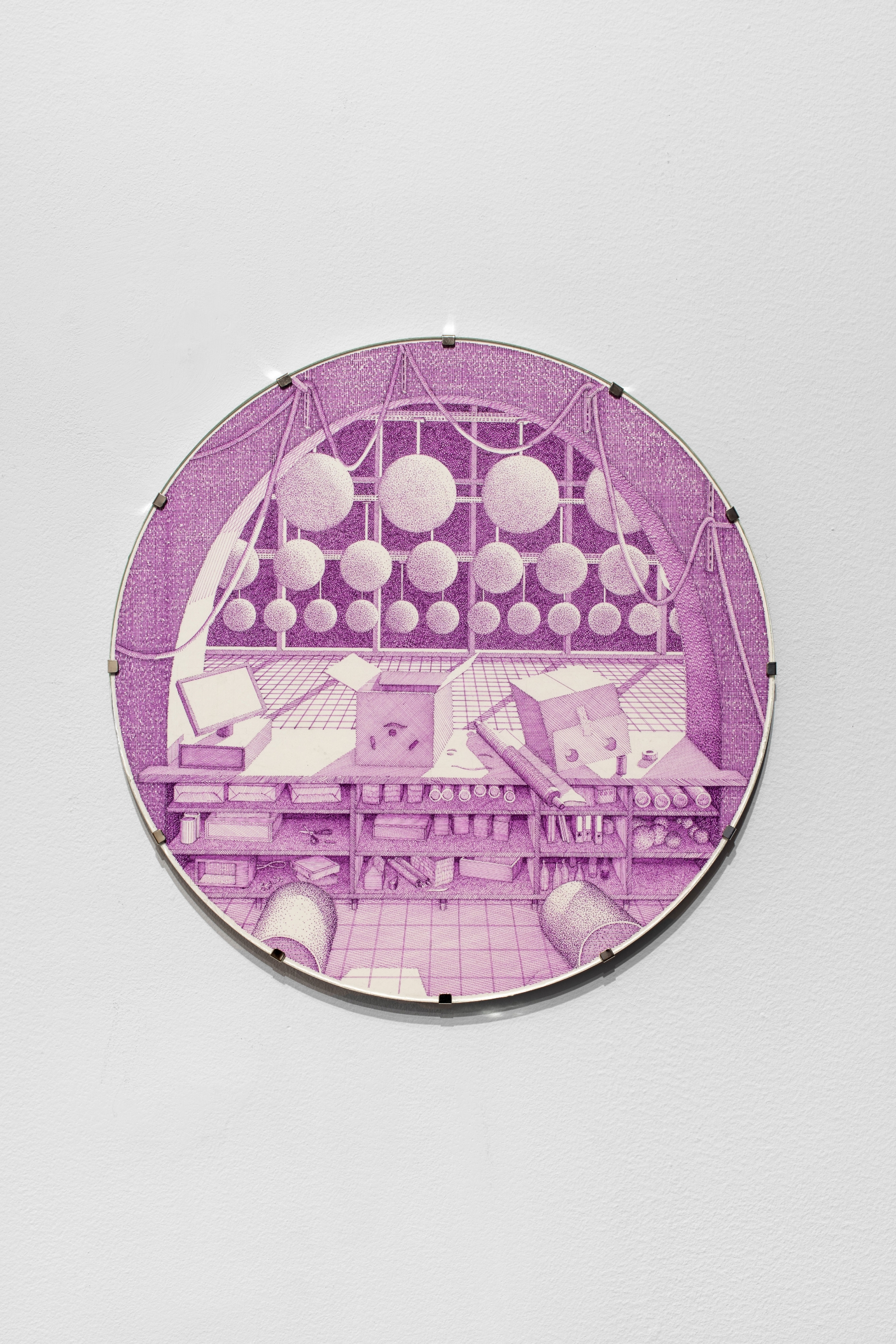
Wolfgang Matuschek a pensé intituler son exposition « Buildings » mais finalement non. Cette idée lui est venue parce que l’ancien étudiant en architecture qu’il est aime à se questionner sur la définition de ce qu’est un bâtiment. Ce qui le définit en tant que tel. A quel moment il est considéré comme tel, c’est-à-dire comme un produit architectural fini. A regarder de près les éléments et les détails qui semblent parfois déployés à l’infini dans les dessins de Matuschek, les toits, étranges et changeants, jouent un rôle prépondérant dans la structure de ses compositions. De même ce sont très souvent eux qui, en la ponctuant, définissent la forme d’un bâtiment.
L’enchevêtrement des plans complexifie encore d’avantage l’appréhension des images créées par Matuschek. A la multitude de détails qui s’y perdent s’ajoute le sentiment d’infini que procure la rigueur de son trait hérité des techniques du dessin d’architecture. Cette méticulosité révèle une sensibilité extrême, à la manière d’un Hercules Seghers, maître de la gravure et influence majeure de Rembrandt. Il utilisait sa virtuosité technique au service de la production d’une imagerie paysagère qui n’était jamais la représentation de quelque chose de tangible mais d’une image mentale, de l’ordre du souvenir ou de la rêverie.
Dans les paysages mentaux de Matuschek le temps semble être aplani, l’urgence a disparu, l’extrême calme est inquiétant. Le ciel s’assombrit au fond de l’image et le souffle du vent devient perceptible : les lampes suspendues sont légèrement inclinées et font vaciller la composition. D’avertis observateurs y ont vu un surréalisme qui confère à une forme de sur-naturalisme°. On pense alors à un naturalisme tardif, un naturalisme néo-post qui aurait enjambé le XXe siècle, et probablement aussi le XXIè siècle, pour renaître des cendres encore chaudes de la disparition de l’humanité. Pour cette exposition orpheline de titre mais que l’artiste aurait aimé intituler « Buildings », même les oiseaux, témoins récurrents des scènes doucereusement apocalyptiques de ses dessins précédents, ont disparu. Le vivant a définitivement cédé la place au représenté. Les animaux ne sont plus des acteurs du paysage mais des vecteurs de complexification des jeux de mise en abyme de l’artiste. L’image dans l’image, un de ses intérêts majeurs, devient le sujet central de cette série de tondo. Seules quelques boîtes en cartons vaguement anthropomorphiques, oubliées ça et là sur des étagères d’usines désaffectées, rappellent que l’homme aurait été à l’origine de ce monde disparu.
A l’origine pourtant il y a ce chien cartoonesque que Matuschek a griffonné, mû par sa fascination pour le processus de création de caractères fictionnels. Les crayons intitulés Characters notes évoquent ses mood boards mentaux confectionnés à l’aide de captures d’écran. Imprimés, jetés au hasard, il conçoit autour d’eux leur support: guéridons, tasses de café, cendriers fumants forment le décorum de ce brainstorming sur lequel on reconnaît quelques illustres personnages : Bunsen and Beaker, Wile E. Cojote, entre autres. Dans cette galaxie d’icônes fictionnelles trônent Mysterious Pete et son chien, the Hound of Bunkerville. Exfiltrés du comics de Lyonel Feininger, The Kin-der-Kids (1906), ces inquiétants messagers que véhicule un nuage, apparaissent désormais sur des panneaux d’affichage et ne semblent plus disposer du pouvoir d’influence narrative que leur avait conféré le maître americain. L’intrigue semble elle aussi avoir disparu au profit des billboards et de la grande réclame où gisent les personnages de Matuschek. Hagards ? A moins que tout cela ne soit un leurre, que nous soyons bernés par la répétition des mises en abyme de ces images et que l’artiste nous cache bien mystérieusement l’intrigue qui se noue sous nos yeux.
°Cf. Ernst Yohji Jaeger
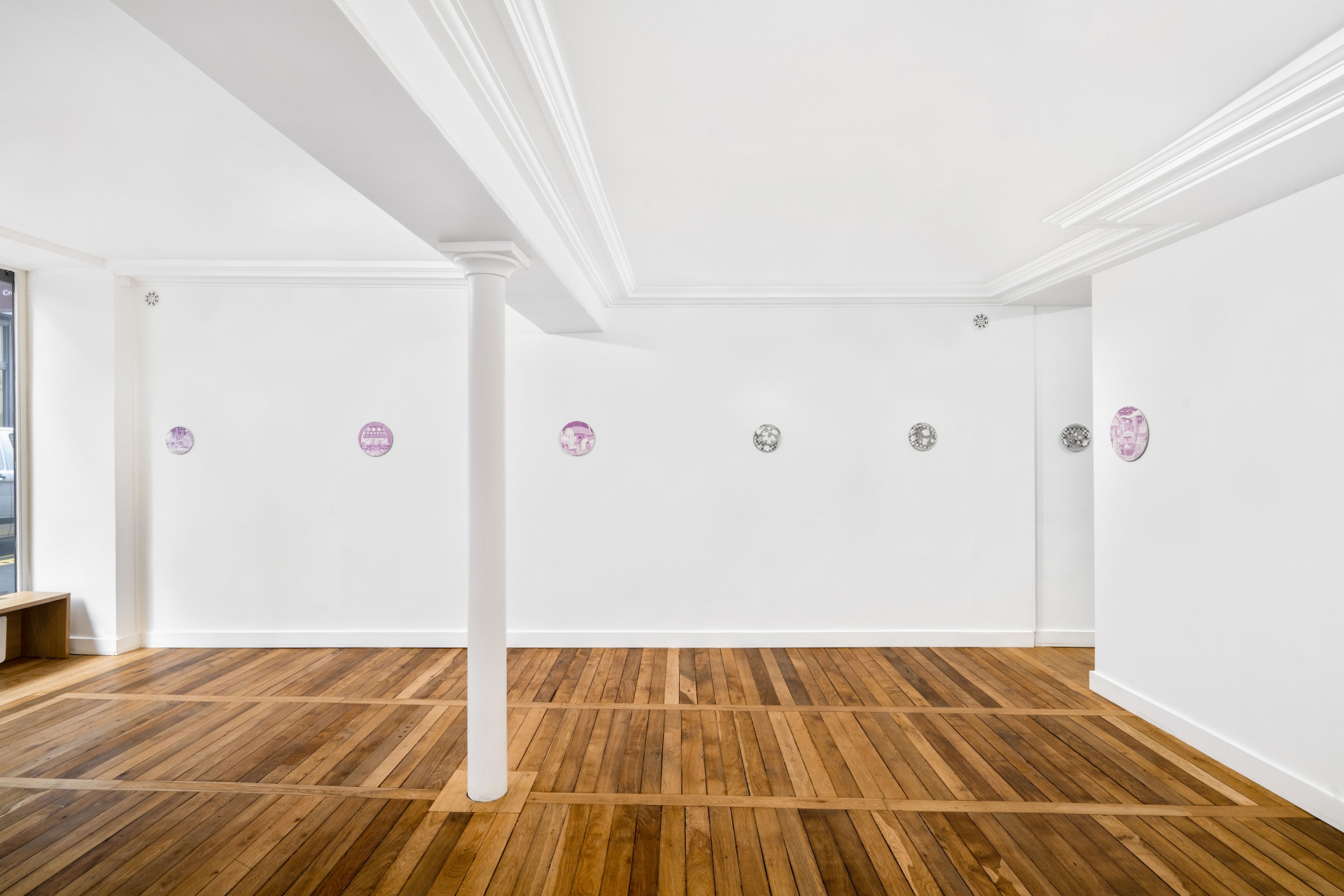
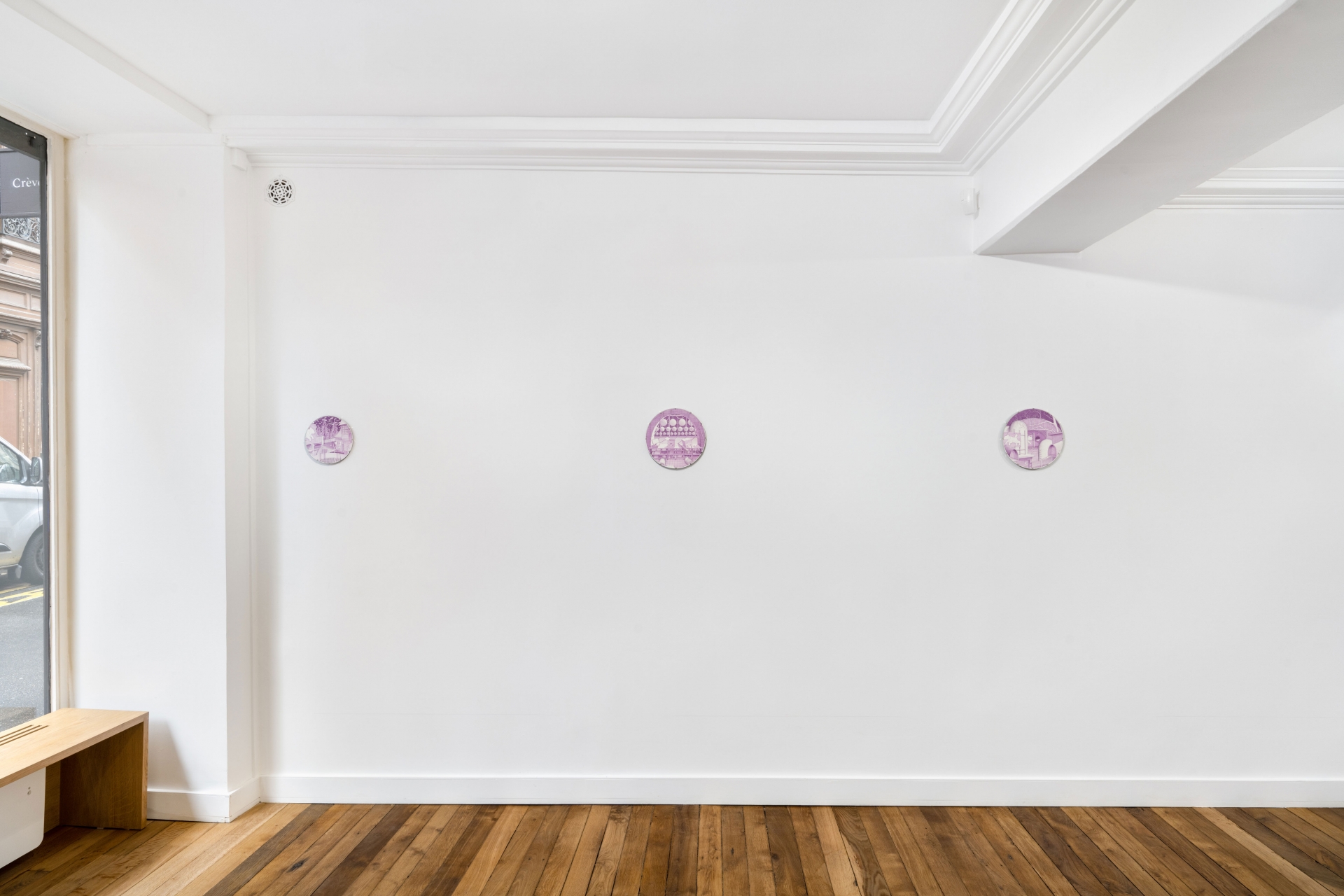
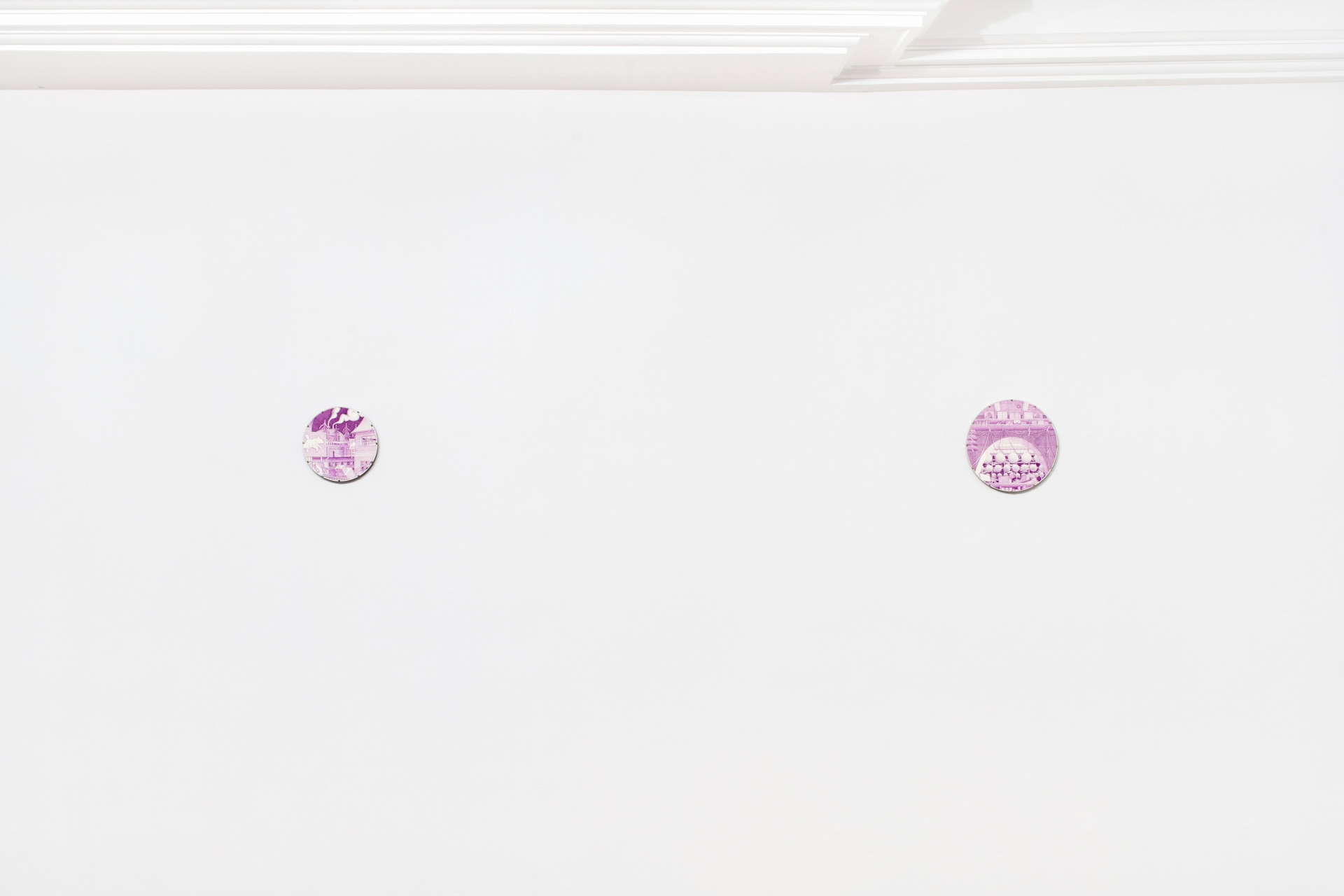
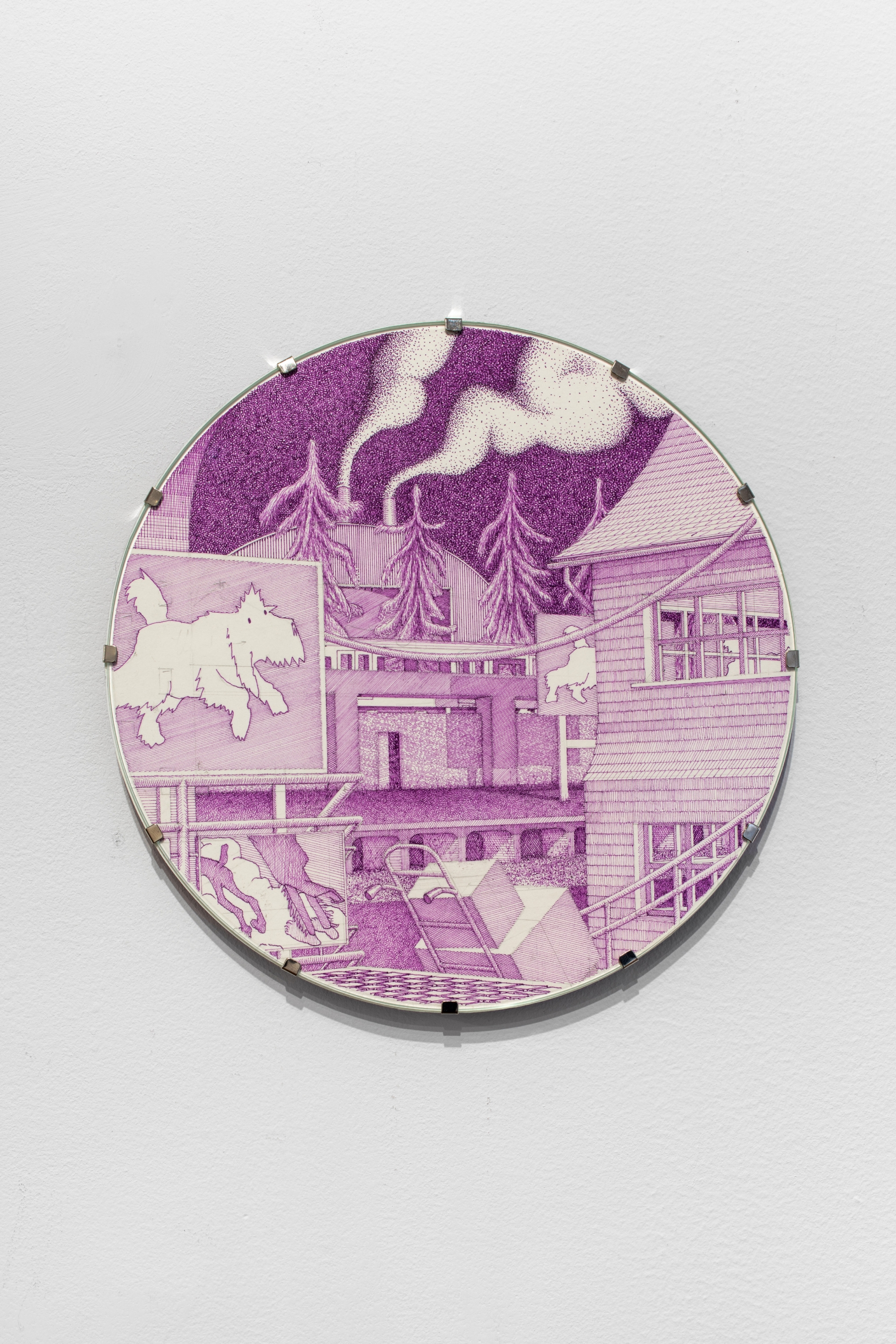
Afternoon 5, 2023
Ink on paper in aluminum uv glass clipframe, 20 cm (diameter)

Untitled (Boxes 2), 2023
Ink on paper in aluminum uv glass clipframe, 25 cm (diameter)
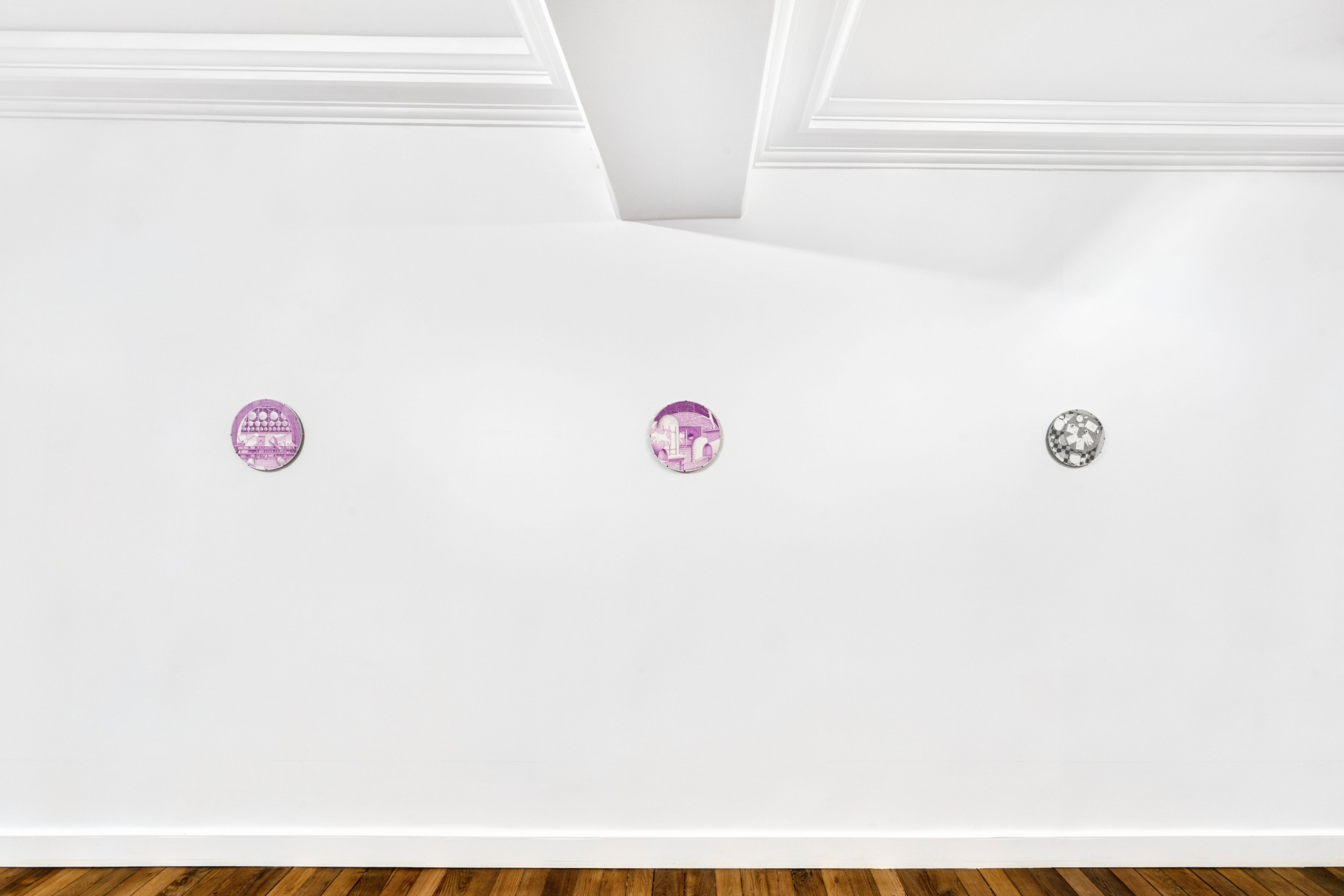
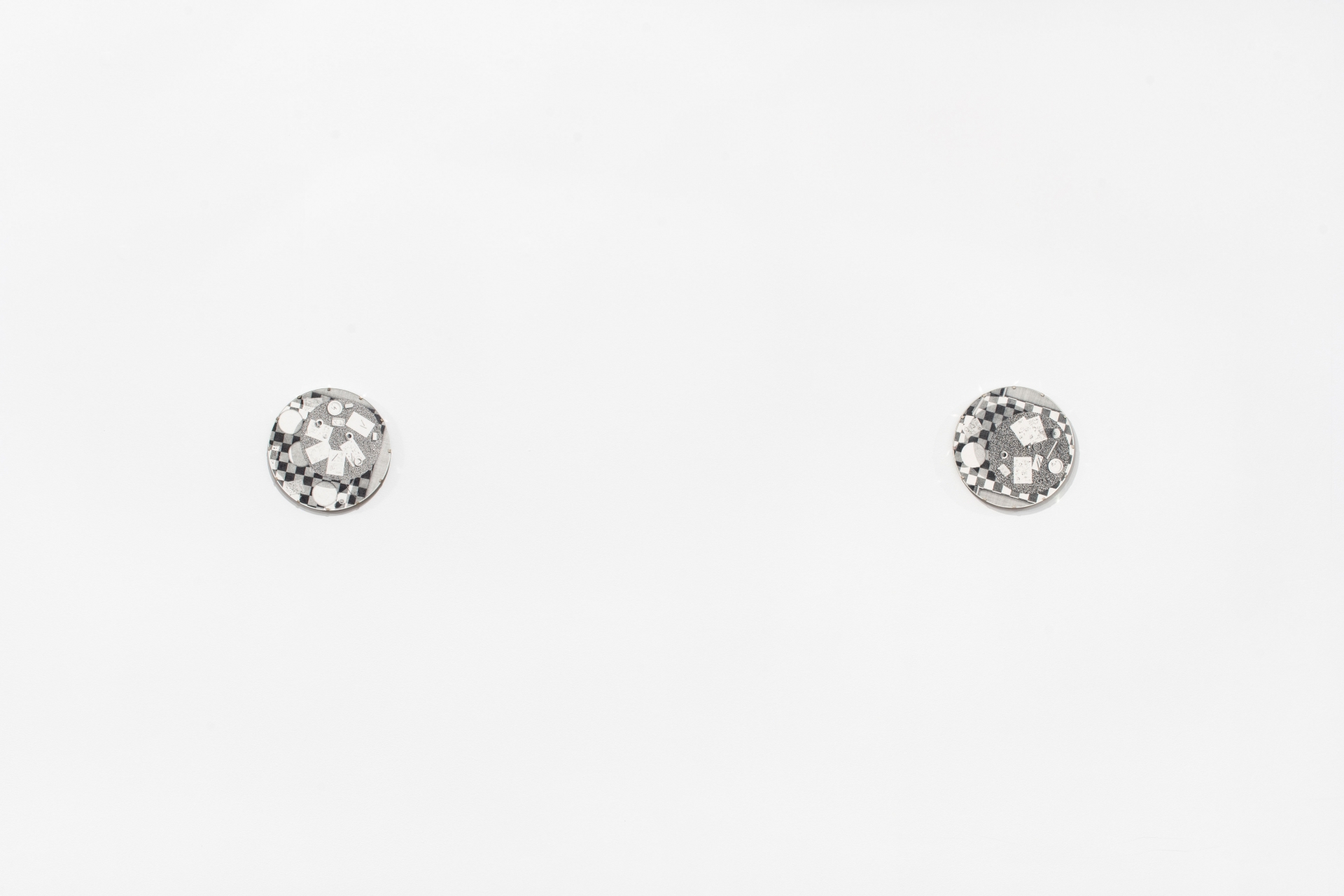
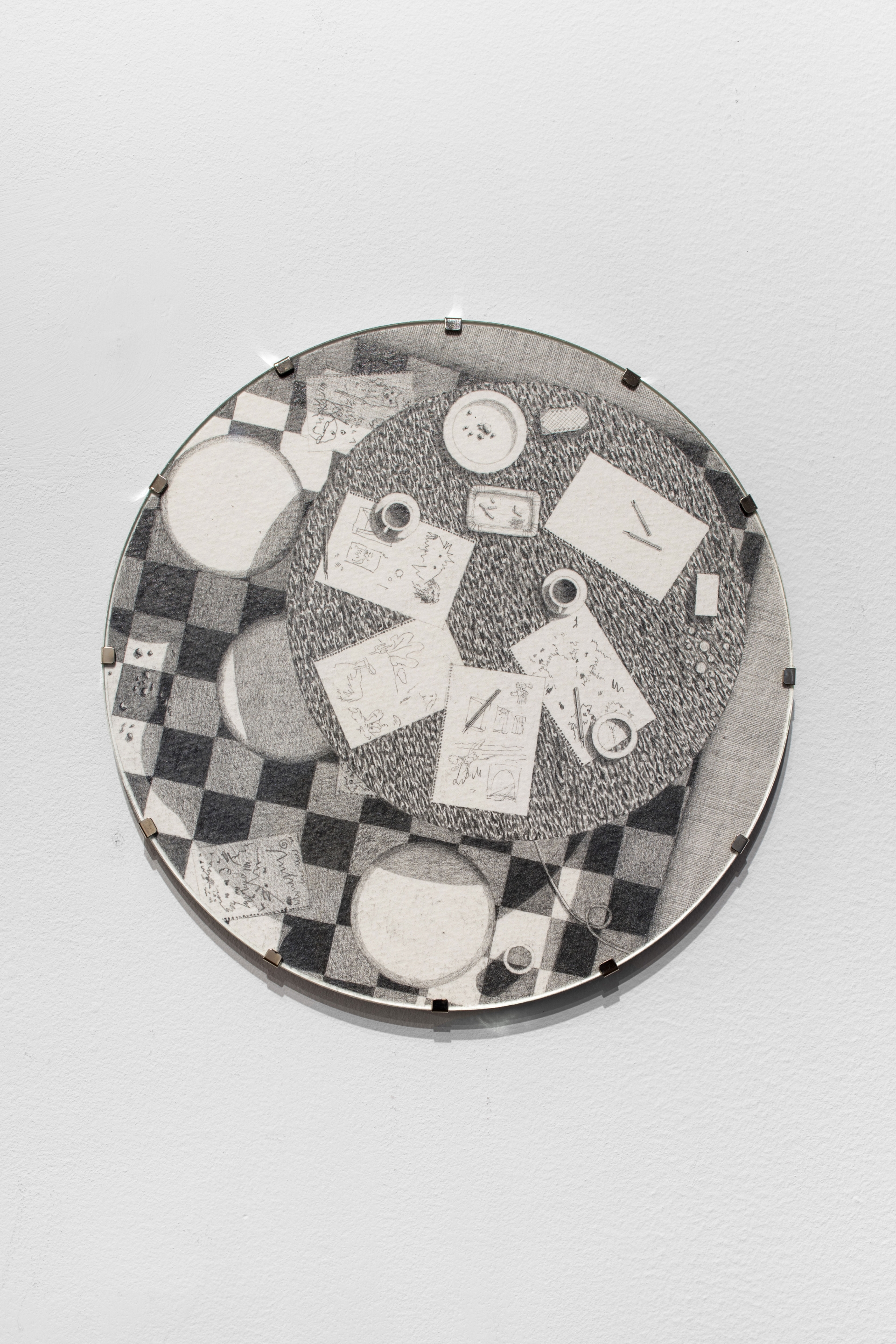
Character Notes 2, 2023
Pencil on paper in aluminum uv glass clipframe, 20 cm (diameter)
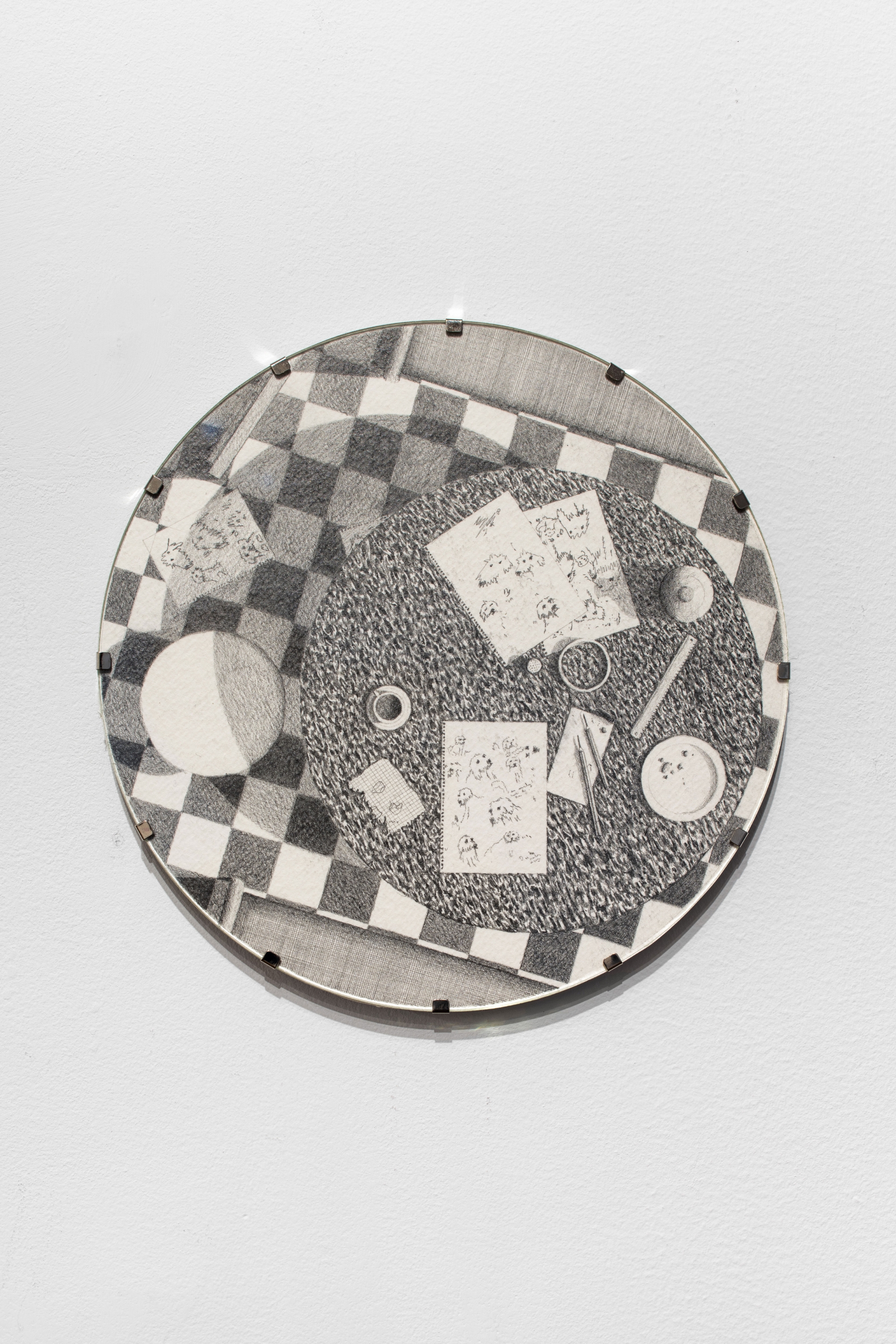
Character Notes 1, 2023
Pencil on paper in aluminum uv glass clipframe, 20 cm (diameter)
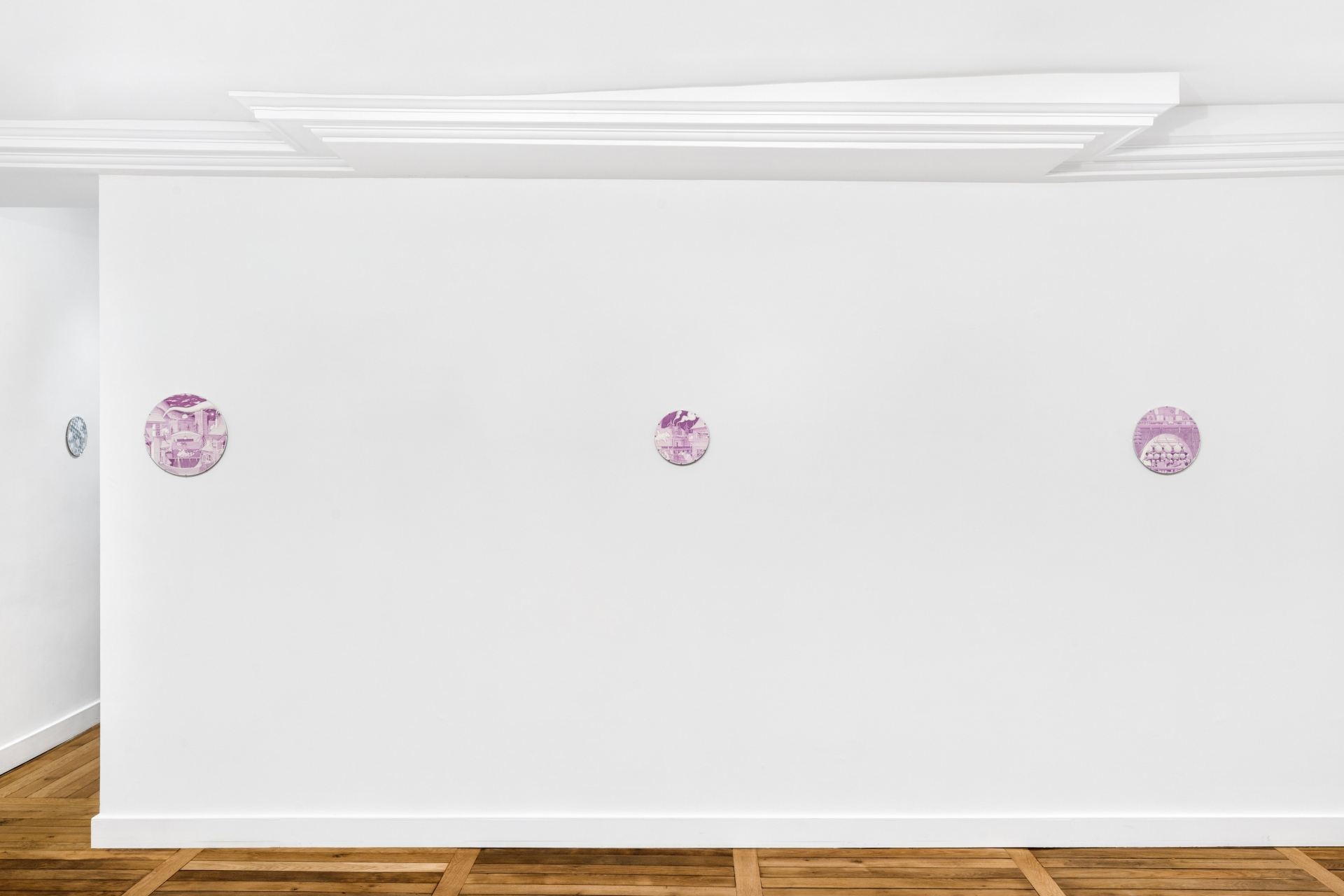
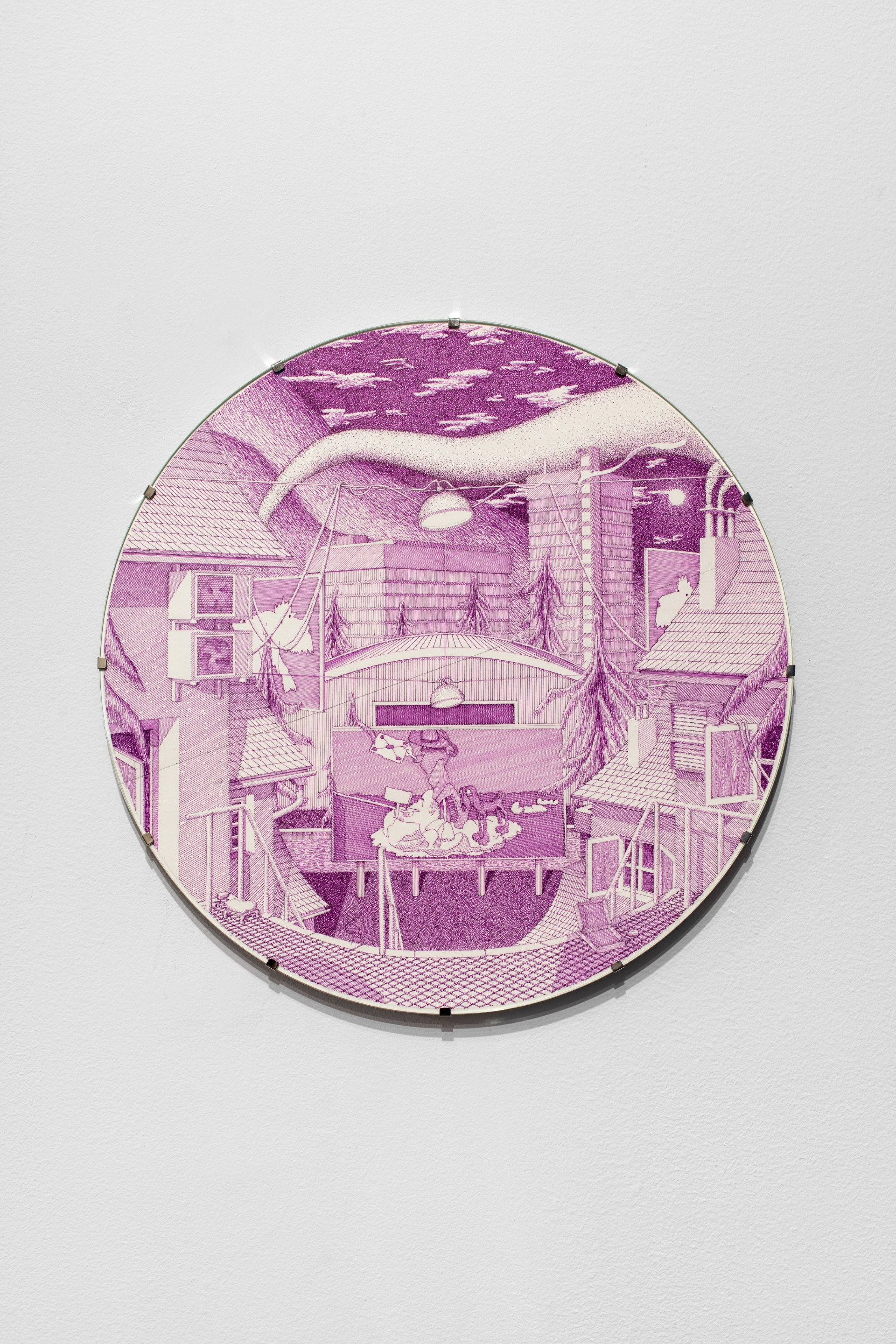
Afternoon 7 (Mysterious Pete & his hound), 2023
Ink on paper in aluminum uv glass clipframe, 30 cm (diameter)
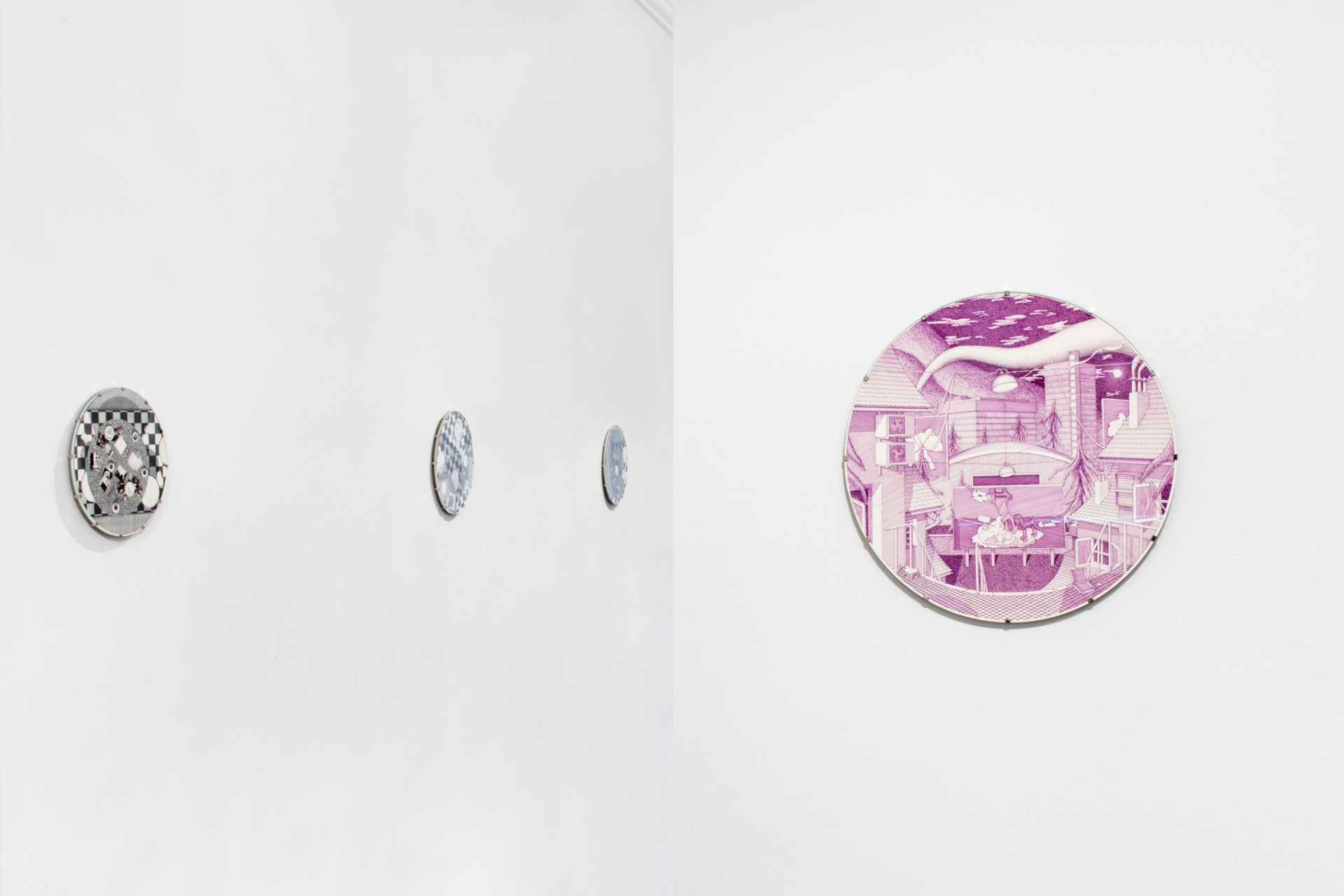
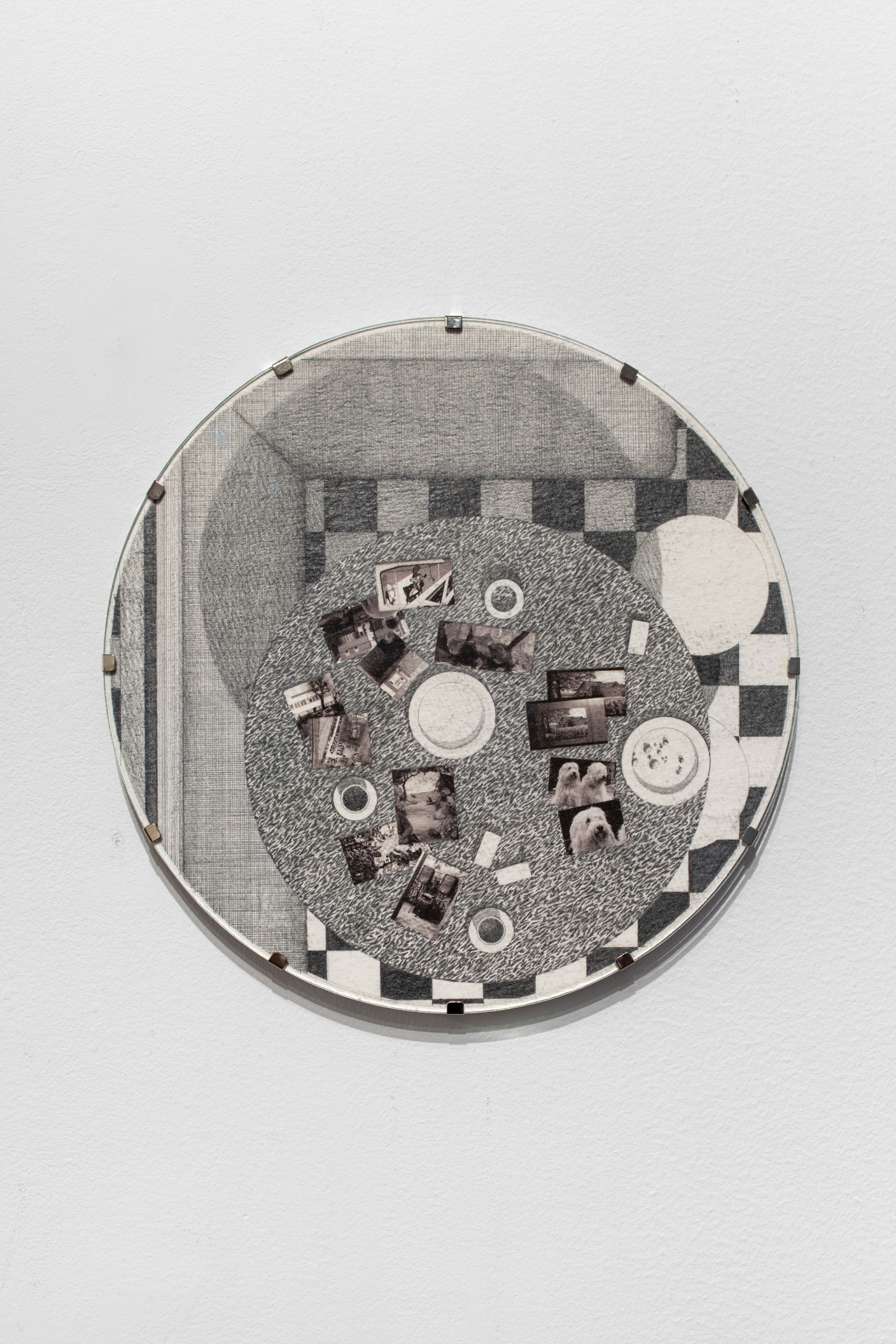
Table 1, 2023
Print and pencil on paper in aluminum uv glass clipframe, 20 cm (diameter)
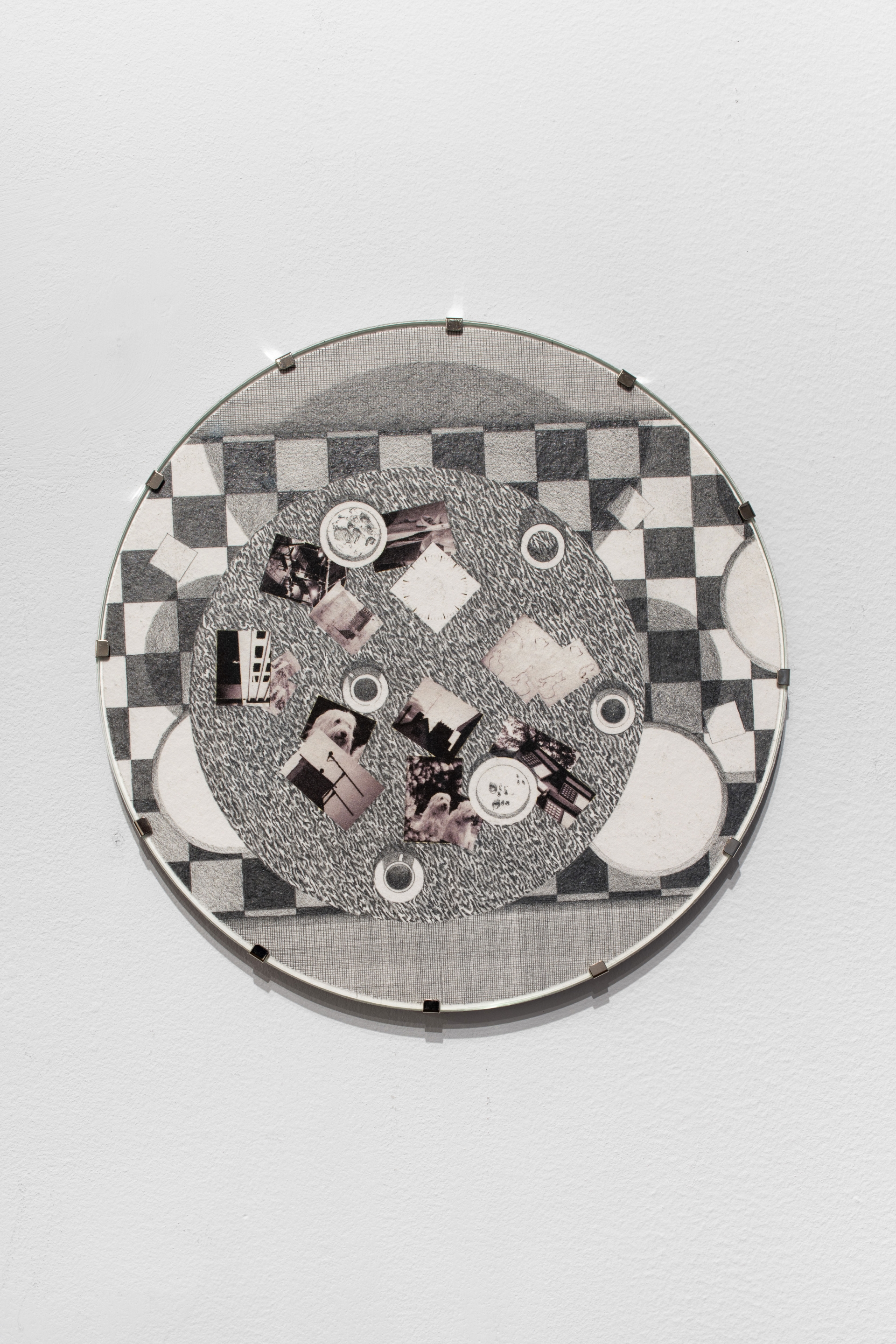
Table 2, 2023
Print and pencil on paper in aluminum uv glass clipframe, 20 cm (diameter)
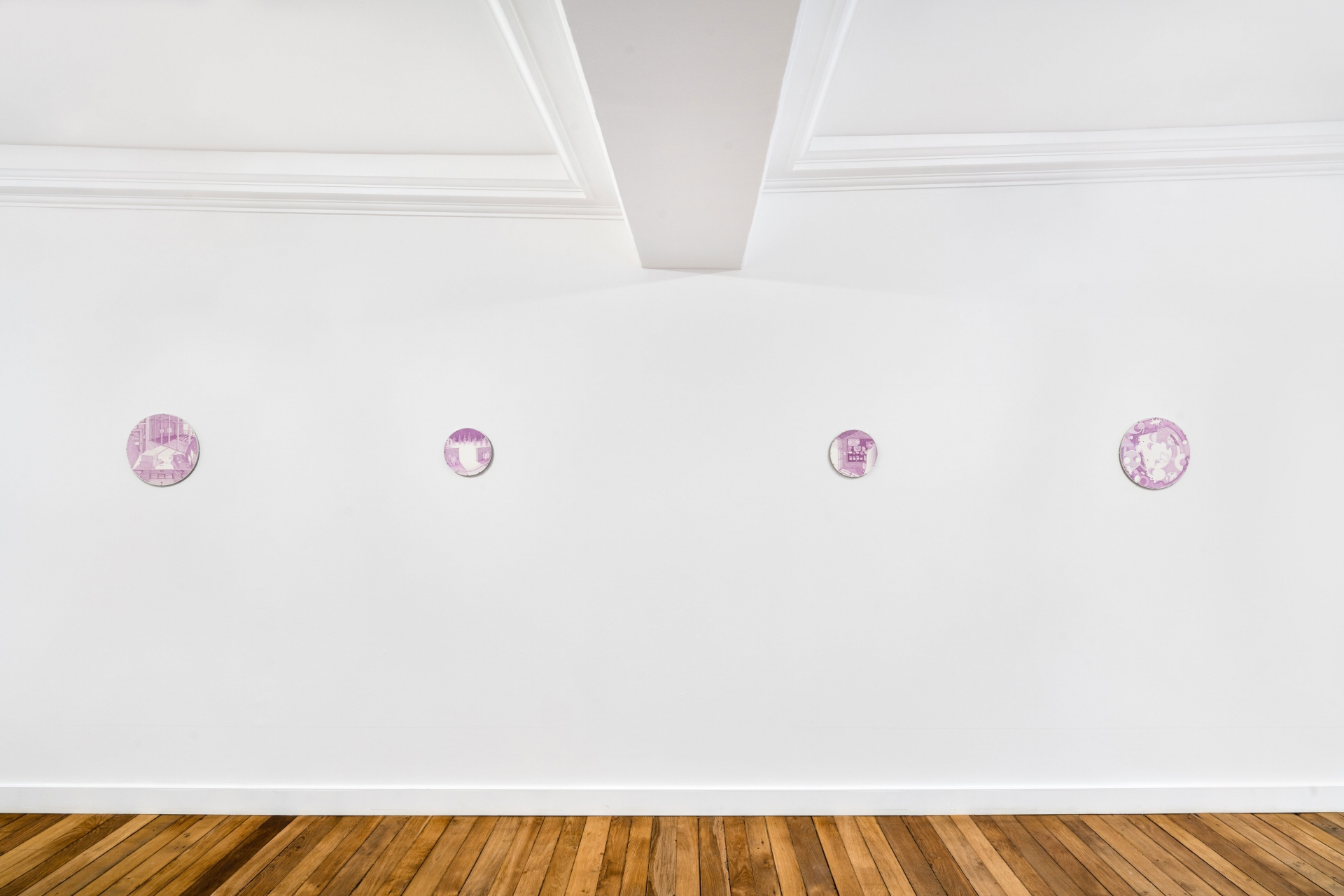
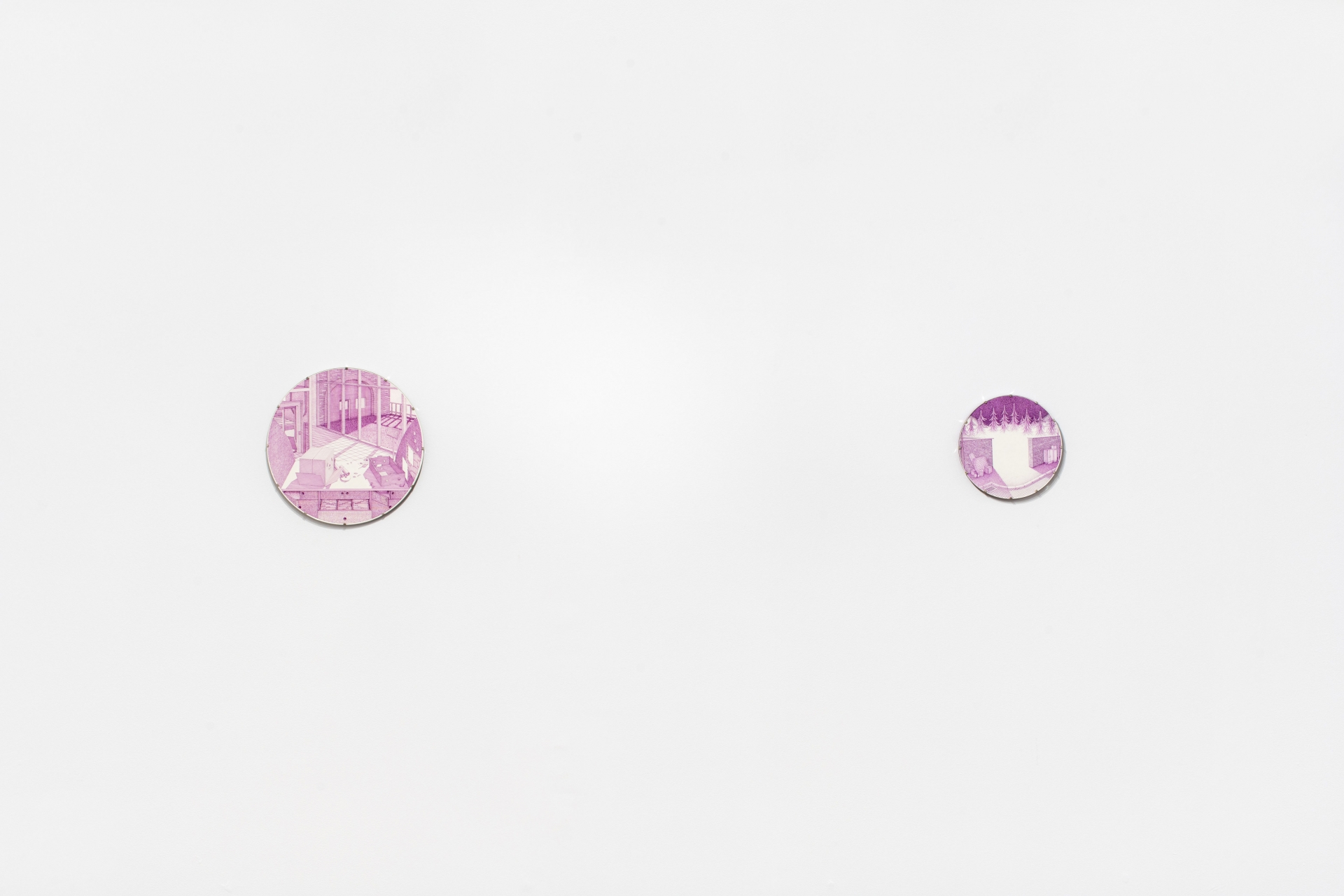
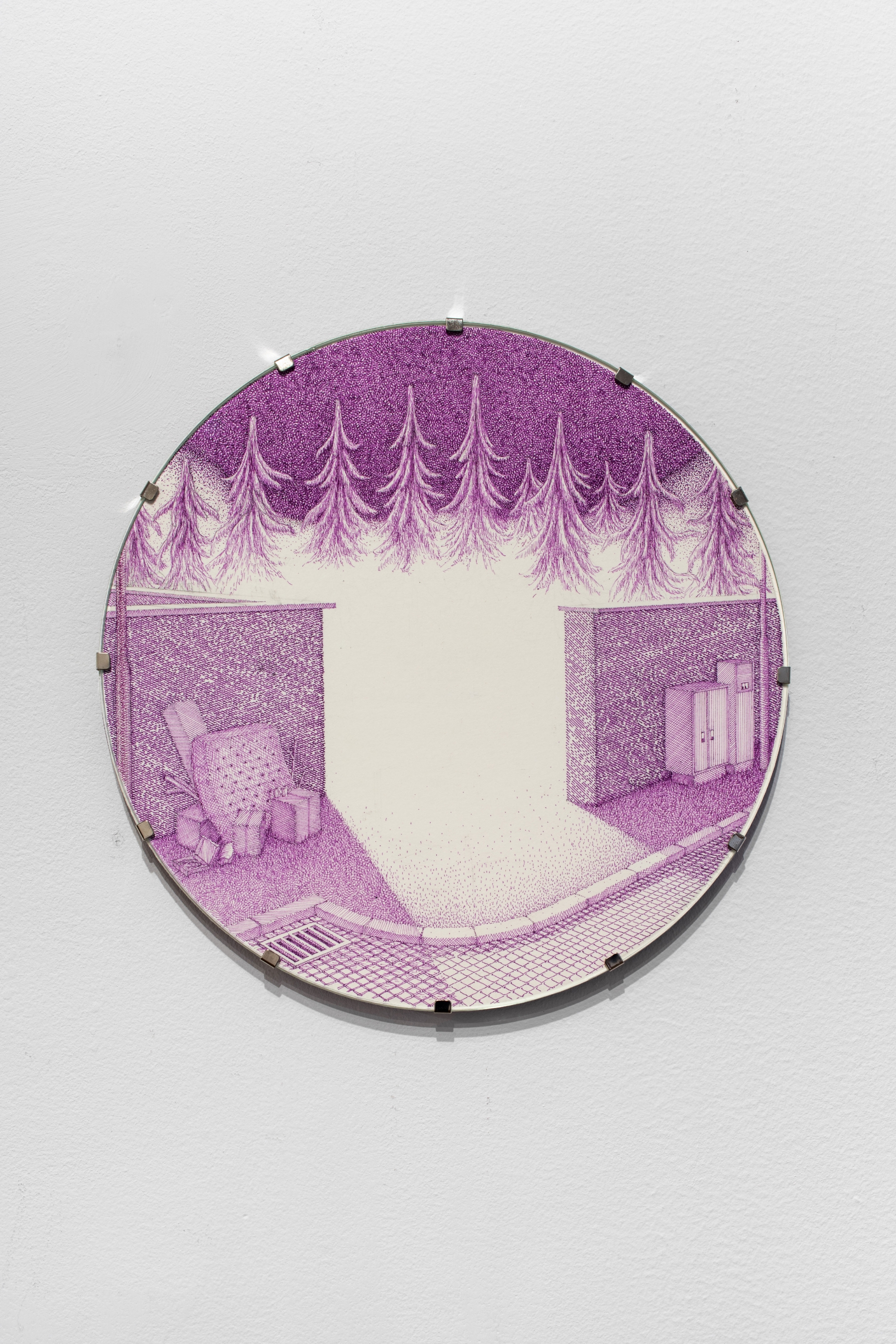
Untitled (2), 2023
Ink on paper in aluminum uv glass clipframe, 20 cm (diameter)
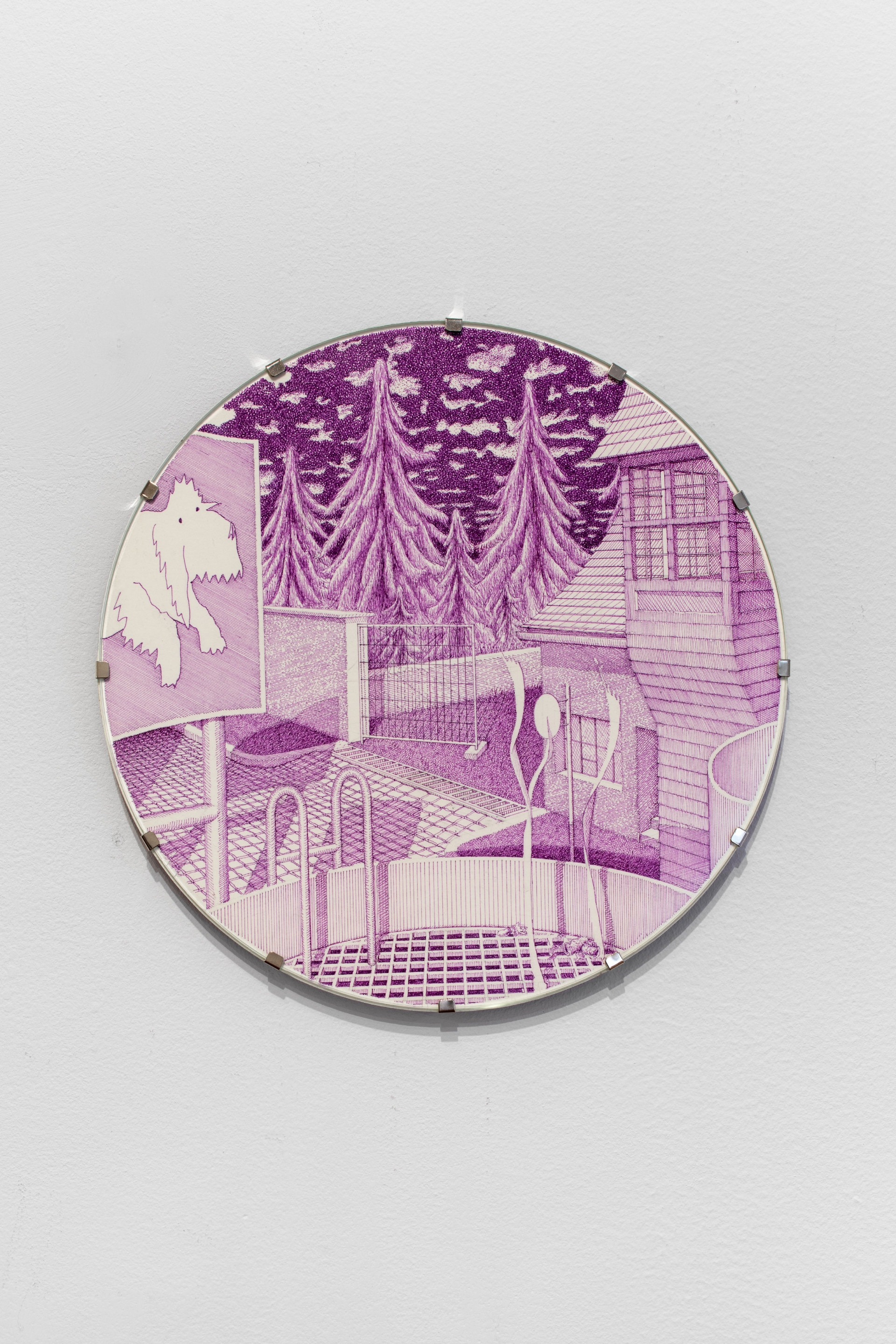
Afternoon 6, 2023
Ink on paper in aluminum uv glass clipframe, 20 cm (diameter)
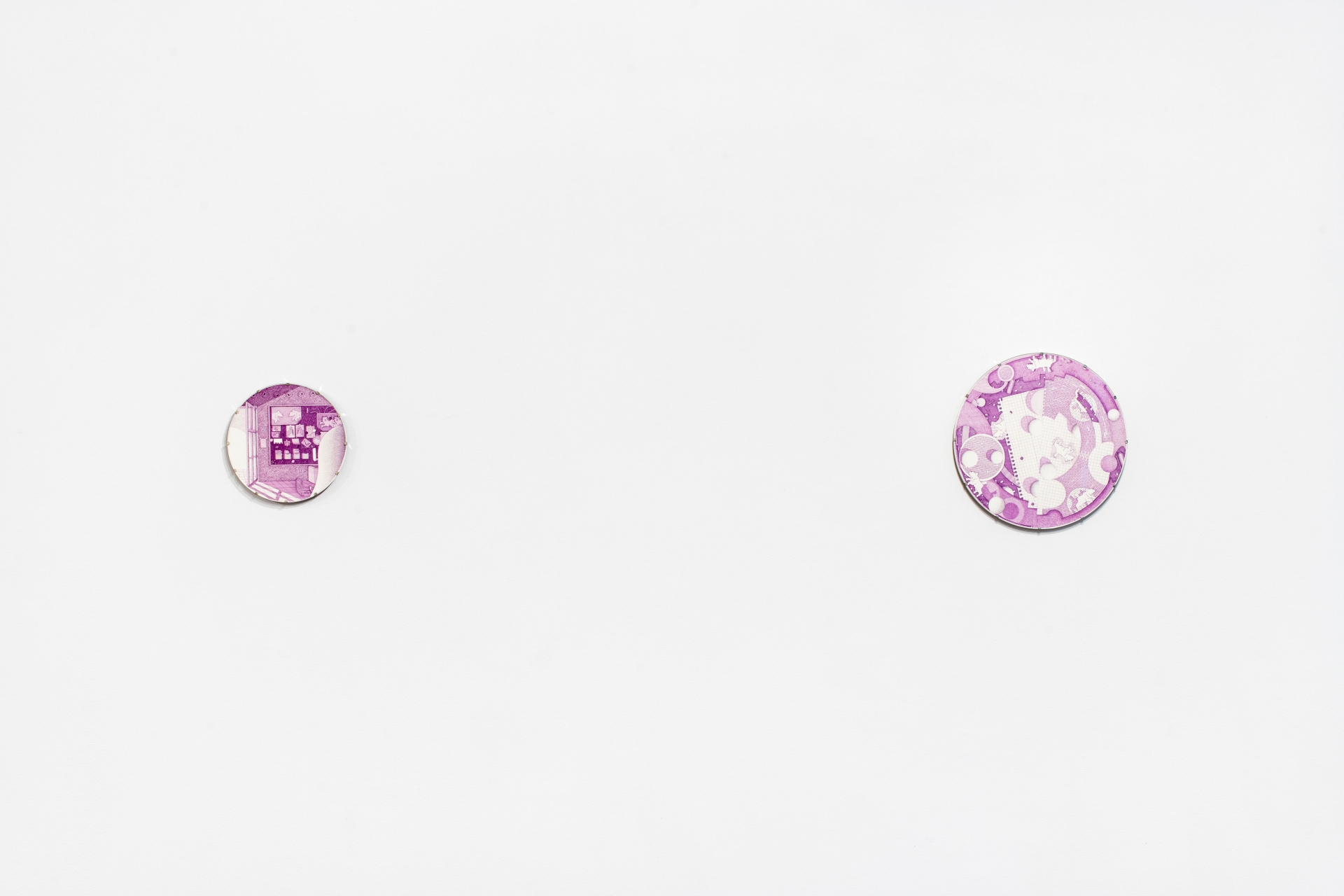
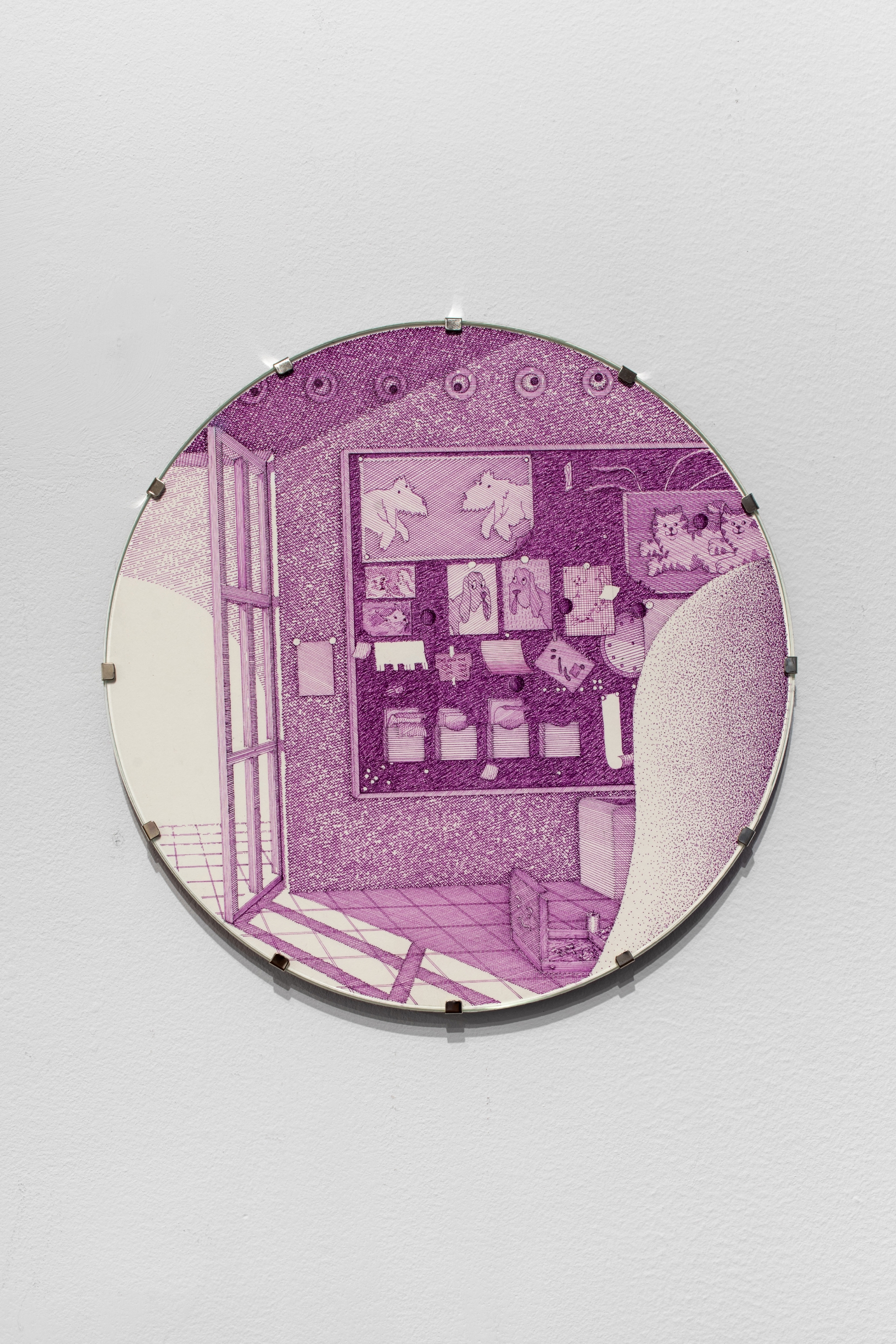
untitled (3), 2023
Ink on paper in aluminum uv glass clipframe, 20 cm (diameter)
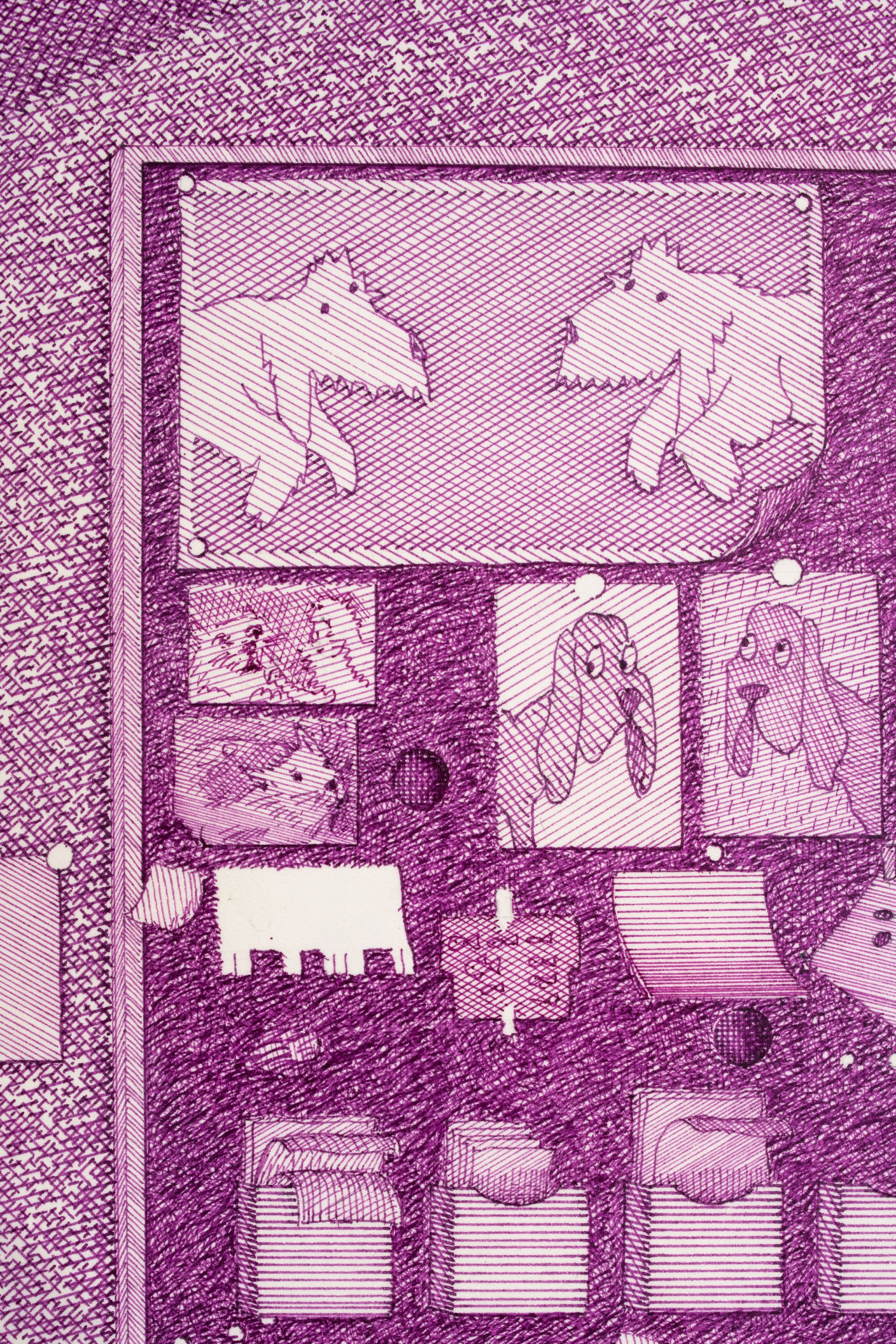
untitled (3), 2023
detail
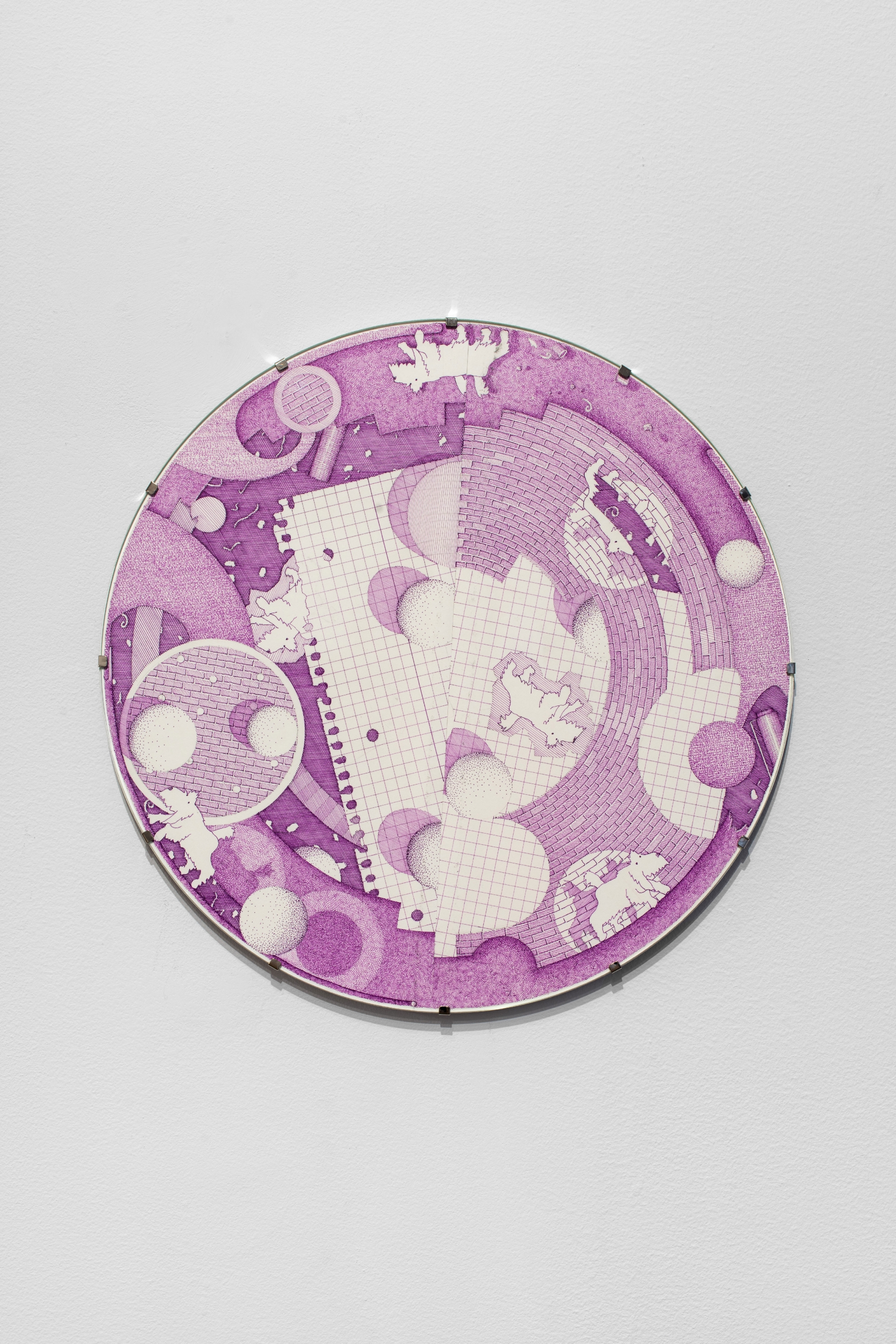
Exit 1, 2023
Ink on paper in aluminum uv glass clipframe, 30 cm (diameter)
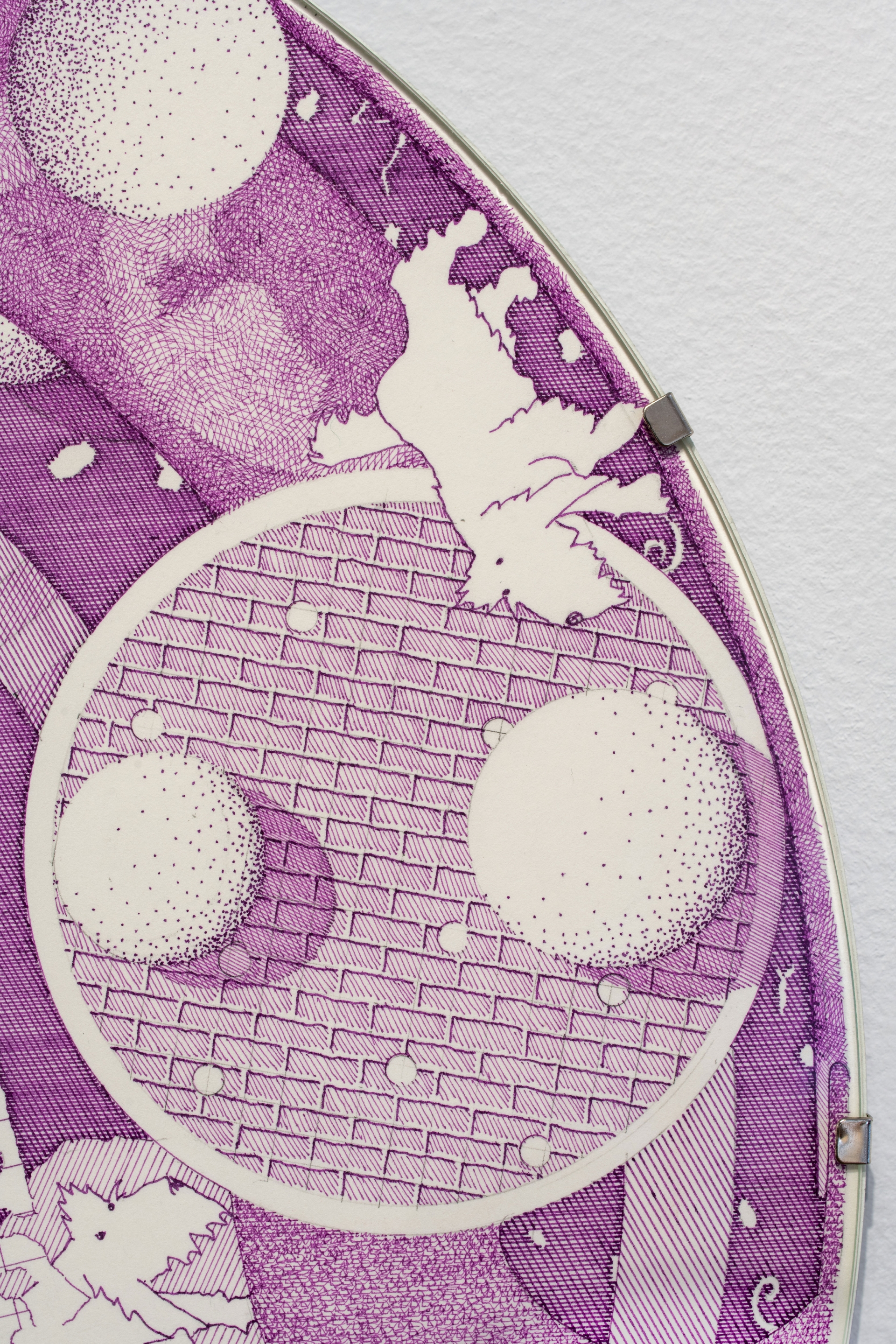
Exit 1, 2023
detail
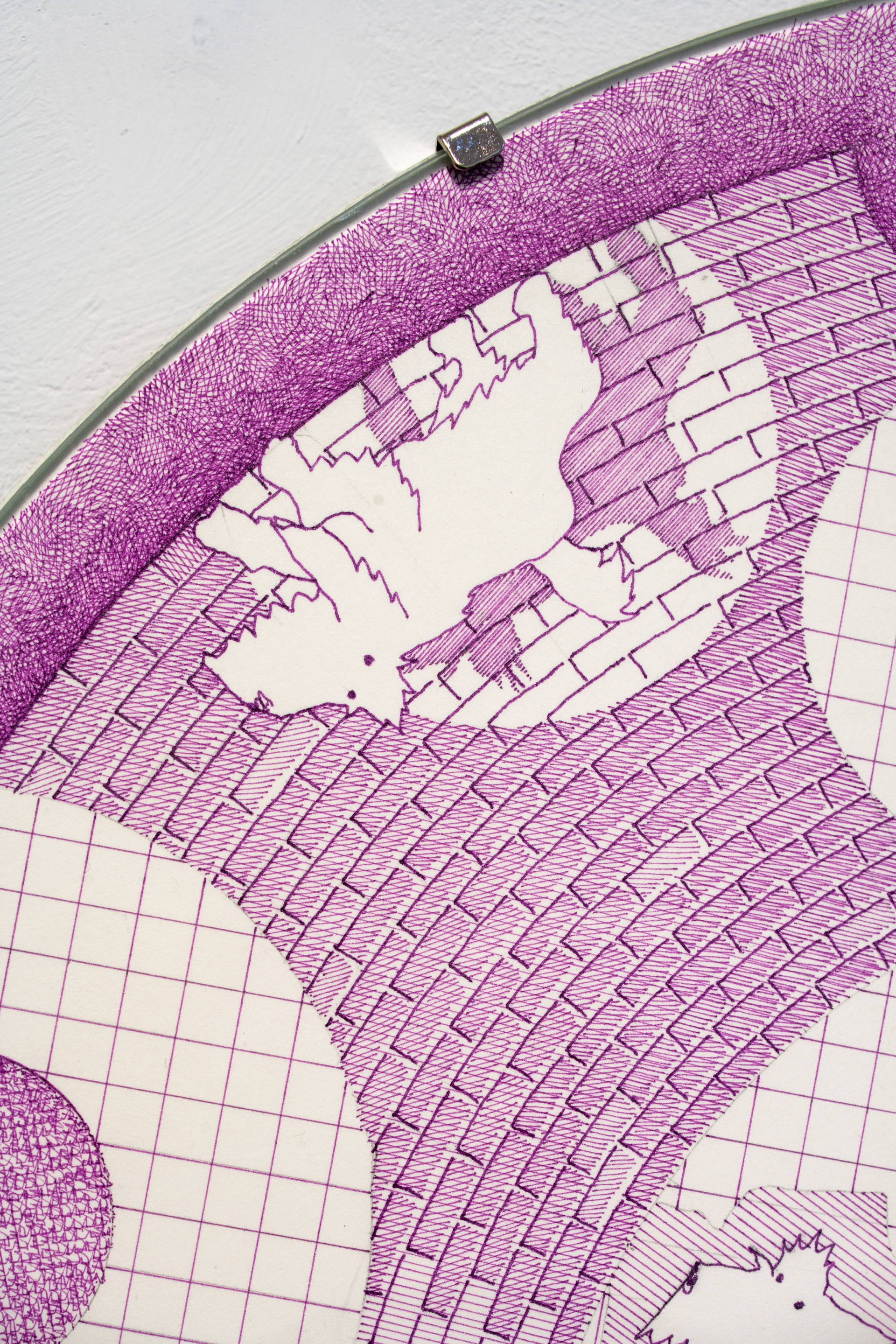
Exit 1, 2023
detail
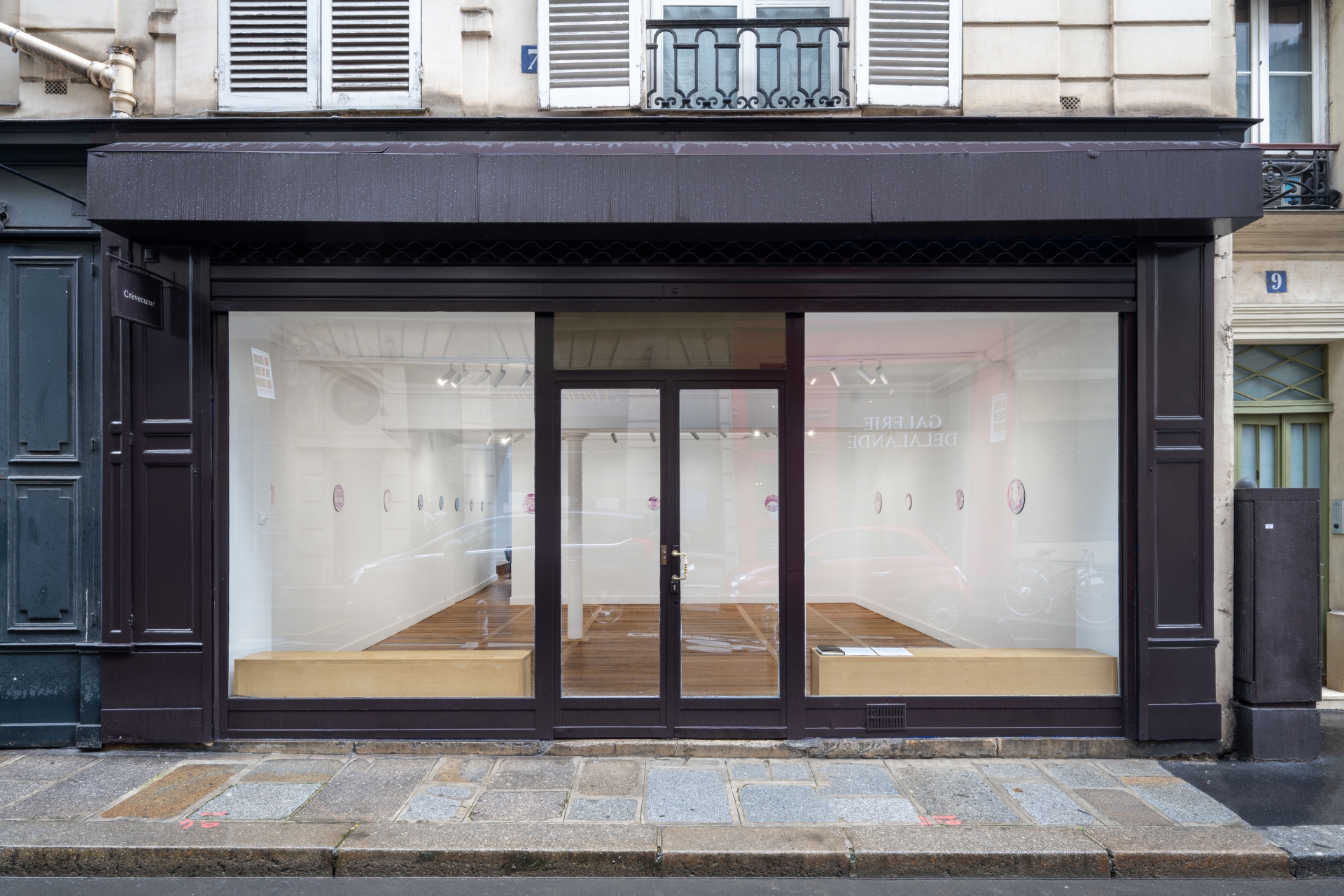
Exhibition views, work views — Photo: Martin Argyroglo
PARIS — Cascades
9 rue des Cascades
75 020 Paris – France
from Tue. to Fri.: 10 a.m. to 6 p.m.
Sat.: 11 a.m. to 7 p.m.
and by appointment
PARIS — Beaune
5 & 7 rue de Beaune
75 007 Paris – France
from Tue. to Fri.: 10 a.m. to 6 p.m.
Sat.: 11 a.m. to 7 p.m.
and by appointment
Contact
PARIS — CASCADES: +33 (0)9 54 57 31 26
PARIS — BEAUNE: +33 (0)9 62 64 38 84
info@galeriecrevecoeur.com